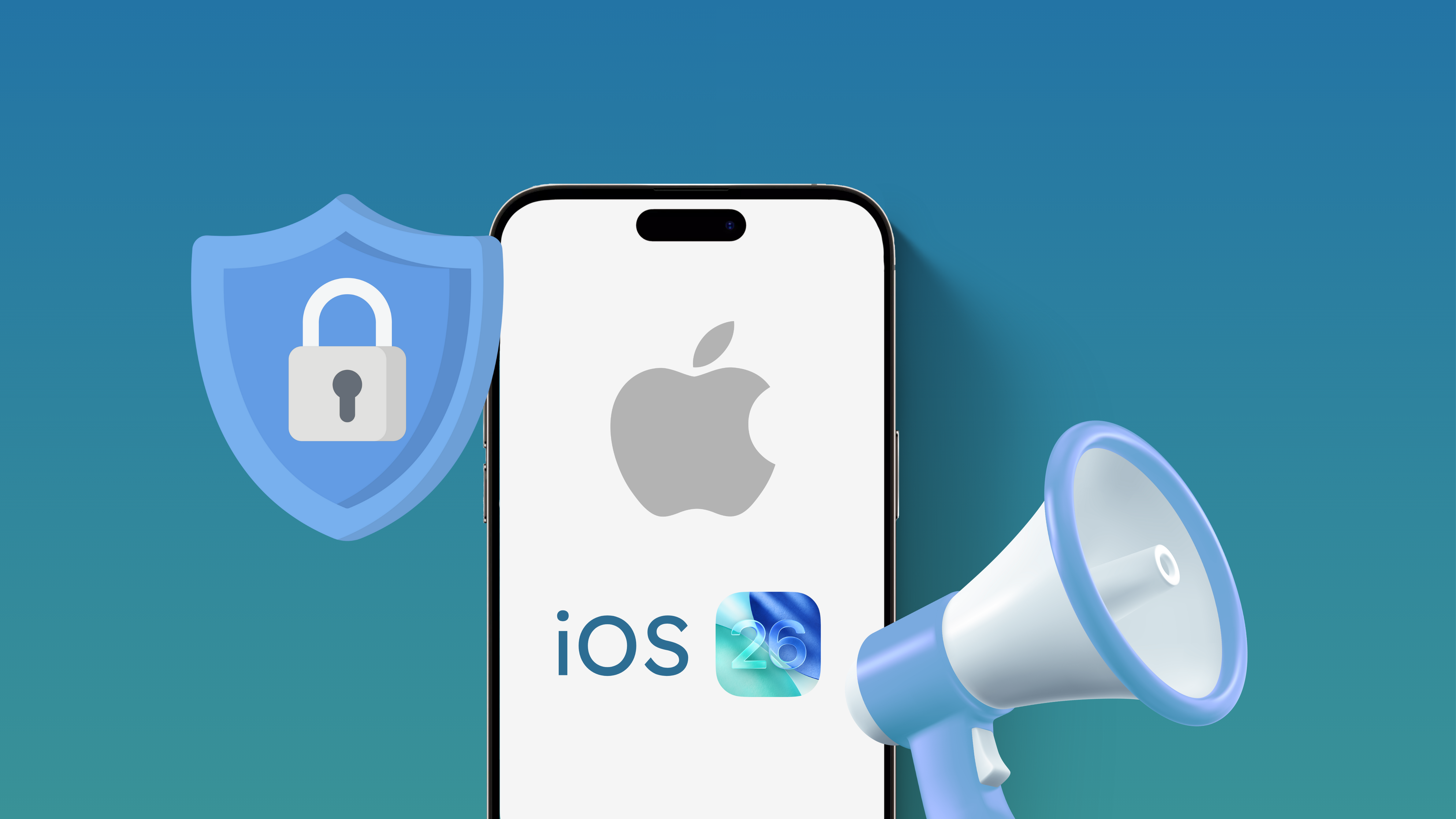Navigating Apple’s iOS 26 Privacy Shift: A Strategic Perspective for CMOs and Paid Media Leaders

Apple’s latest software update – iOS 26 (alongside Safari 26) – delivers a clear wake-up call for marketing and business leaders. With a suite of aggressive privacy controls embedded directly into the browser and operating system, long-established models of tracking, attribution, and targeting are being fundamentally redefined. This is no longer a tactical challenge but a strategic one. In this article, we unpack what’s new in iOS 26, why executive teams should take notice, how these shifts will reshape paid media economics, and what decisive actions leadership teams must prioritise to stay ahead.
iOS 26 and Safari 26 Privacy Overhaul: How Apple’s Update Redefines Web Tracking
Apple announced iOS 26 at its Worldwide Developers Conference on June 9, 2025. The public rollout already began globally on September 15, 2025. According to coverage of the update for Safari 26 and related browser changes, the tracking-impacting features aligned with the September release window.
Apple’s New Fingerprinting Shield: What It Means for Tracking and Attribution
In Safari under iOS 26, the feature known as Advanced Fingerprinting Protection will be enabled by default for all browsing sessions (not just private mode). Safari now injects “noise” into APIs used for identifying devices (2D Canvas, WebGL, AudioBuffer etc) and standardises or suppresses signals such as screen/window metrics so that a device’s fingerprint is much less unique.
This means that device-level or browser-level identification (outside cookies) becomes far harder, limiting provenance of users across sessions.
Link Tracking / Click ID Stripping
Safari (and likely links opened via Mail/Message apps) will strip known click identifiers such as gclid, fbclid, msclkid, dclid in certain contexts. UTM parameters, however, (e.g., utm_source, utm_medium, utm_campaign) remain intact in many cases.
The stripping is more apparent in Private Browsing mode or when links are opened via native apps (Mail, Messages) rather than direct browser navigation.
Link Tracking Protection Expansion
The built-in Link Tracking Protection (previously more limited) is being expanded in iOS 26 / Safari 26 so that known tracking parameters are automatically removed or obscured in more usage contexts.
Why iOS 26 Demands Executive Attention: The Next Privacy Shift Every CMO Must Understand
Lessons from iOS 14: What the ATT Rollout Taught Marketers About Privacy Disruption
Back in 2020, Apple’s iOS 14 introduced the App Tracking Transparency (ATT) framework, requiring apps to request explicit user consent for IDFA-based tracking. This shift upended mobile measurement, attribution, and retargeting.
The impact was most visible in Meta’s ecosystem. In this case study below, Facebook’s internal reporting showed a sharp drop in tracked conversions and ROAS of iOS devices after the iOS 14.5 rollout, even though budgets stayed stable. Meanwhile, third-party analytics such as Google Analytics showed steadier performance, indicating user behaviour hadn’t changed, only Facebook’s visibility into it. In practice, the ATT update didn’t reduce true conversions; it fragmented measurement, obscuring which campaigns drove results.

For advertisers with a high share of iPhone users, this caused apparent declines in campaign efficiency, broken attribution paths, and more cautious optimisation. The lesson was clear: when platform-level tracking is restricted, dependence on a single data source becomes a liability.
The upcoming iOS 26 changes represent the next wave of disruption: this time in the browser and web environment. With Safari’s new privacy protections limiting identifiers and click-level data, marketers will face similar visibility gaps. The difference now is that it will affect the open web, not just app-based activity, expanding the challenge to nearly every digital channel.
Global iPhone Adoption in 2025: iOS 26’s Impact Will Be Impossible to Ignore
Globally, the number of active iPhone users is estimated at around 1.56 billion in 2025.
- In the United States alone, estimates suggest about 150 million iPhone users in 2025.
- In Europe/EMEA, iOS holds a significant share of the smartphone base (estimates vary by country but many Western European markets show ~30-35 % penetration) which gives the update broad relevance to marketers operating across APAC, EMEA and the Americas.
When you consider this scale, any disruption to tracking, attribution or measurement touches major budgets, cross-channel strategies and media ROI. CMOs should treat iOS 26 as a business risk (measurement blind spots) and a strategic opportunity (first-mover advantage for privacy-resilient media stacks).
How iOS 26 Will Reshape Paid Media Performance and Attribution
Attribution Accuracy Will Degrade (Even More Than It Already Is)
With click-IDs stripped in certain contexts and fingerprinting yielding less reliable device-linkage, conversion reports will show gaps. Many paid-media teams will observe “unknown source” conversions rising, and direct click-to-conversion links shrinking. That raises questions for budget efficiency, ROAS baselines and channel comparisons.
Targeting and Retargeting Weaken
Paid-media platforms rely heavily on deterministic identifiers (click IDs, cookies, device IDs) and fine-grain tracking for optimisation and retargeting. With fewer usable signals in the iOS-Safari environment, platforms will see slower learning curves, degraded targeting precision, and higher CPAs. This impacts not just media buys but creative strategy, bidding logic and channel mix.
Measurement and Reporting Complexity Rises
Traditional last-click or deterministic attribution models will become less useful. Increased reliance on aggregated data, probabilistic or hybrid modelling, server-side tracking and first-party data will become imperative. Media dashboards will increasingly report “measurement uncertainty” and teams must adapt accordingly.
Relevant guide: Great ROAS, Terrible Results: The Case for CLV-Centric Advertising
Media Platforms Will ‘Again’ Feel the Drag
Major ad platforms (search, social, display) will need to adjust as signal quality degrades. Performance metrics may shift unfavourably with higher marketing investment diluted by weaker signal flows, making optimisation slower and less precise. This amplifies the importance of strategic planning, testing and measurement redesign.
Adapting to iOS 26: Strategic Priorities for CMOs and Growth Leaders
Strengthen Your First-Party Data Infrastructure
Ensure your website or app has a first-party pixel or event collection under your domain, ideally with server-side capture so you command the signal rather than relying on browser-side tags. Without this you risk losing visibility.
Rebuild Campaign Measurement with UTM Tagging and Predictive Modelling
Tag campaigns thoroughly with UTM parameters and accept that classic click-IDs will increasingly fail. Develop campaign modelling frameworks (media-mix modelling, controlled hold-outs, incrementality testing) that compensate for missing click-level linkage.
Relevant webinar: Google Performance Max: Using Predictive Intelligence to Win Loyal New Customers
Re-evaluate Targeting & Retargeting Strategies for a Privacy-First World
Shift your focus from precision at the device level to relevance at the audience level. Move beyond fine-grain, identifier-based targeting and instead build strategies around cohorts, contextual signals, and owned data. Strengthen your CRM and customer data platform integrations to activate richer, privacy-compliant audiences across channels. This transition moves your approach from device dependency to true data resilience, ensuring performance even as individual tracking signals disappear.
Modernise Measurement and Reporting for a Post-Attribution Era
Evolving privacy standards demand more than incremental fixes but a fundamental shift in how performance is measured. Move beyond attribution models reliant on deterministic tracking and embrace hybrid frameworks that merge first-party data, aggregated signals, and probabilistic modelling. Redesign dashboards to surface “data blind spots” transparently and use them as a teaching tool to recalibrate stakeholder expectations around KPIs and performance benchmarks.
These blind spots can be conversions without identifiable click paths, underreported revenue from privacy-restricted browsers, or traffic from channels where tracking parameters are stripped.
Align Stakeholders Around New Marketing Benchmarks
Prepare internal teams for change by clearly communicating that performance metrics will fluctuate and historical benchmarks may no longer be reliable. Engage senior stakeholders early, especially marketing and finance leadership, to ensure they understand that attribution gaps aren’t signs of media inefficiency but symptoms of a shifting privacy landscape. Use this moment to revisit contracts, SLAs, and performance frameworks with your media partners so accountability reflects the new realities of data and measurement.
Establish Continuous Governance for OS and Browser Privacy Changes
Privacy regulations and browser technologies are evolving faster than most marketing stacks can adapt. Staying ahead means actively tracking upcoming updates, whether that’s cookie deprecation, new consent frameworks, or further browser-level restrictions.
Collaborate closely with your analytics and engineering teams to regularly audit how your measurement infrastructure performs across iOS 26 devices and other major browsers. Proactive monitoring today prevents reactive fixes tomorrow.
From Tracking Loss to Strategic Gain: Redefining Growth After iOS 26
The rollout of iOS 26 marks a meaningful inflection point for digital marketing. For CMOs and paid-media leads, a simple technical tweak to handle this rollout is not enough. This demands a strategic rethink of how you measure, target, attribute and optimise campaigns. The days of relying on pristine click-IDs and device fingerprints are drawing to a close. Instead, success will depend on owning your data, modeling intelligently, and adapting media tactics accordingly.
If your organisation is already prepared with first-party tracking in place, clear tagging regimes, hybrid measurement models, you’ll navigate this shift and gain competitive advantage. If you are not ready, you risk performance blind-spots, attribution black-holes and diminished media efficiency.
Nevertheless, don’t worry too much! Every signal lost makes precision more valuable and represents a growth opportunity. The leaders who re-architect now will own the benchmarks everyone else will chase next quarter.
---
Need help cutting through the disruption from iOS 26 rollout for your paid media operations? Reach out to us.
Relevant Insights
· Case study: Mastering Incrementality in 2025 and Beyond: A Practical Guide for Smarter Marketing Decisions
· Article: Will LLMs Replace Search Engines? How Brands Can Stay Visible in the AI Age
· Article: Google Ads Are Coming to AI Mode: What This Means for SEO and Performance Marketing
About Crealytics
Crealytics is an award-winning full-funnel digital marketing agency fueling the profitable growth of over 100 well-known B2C and B2B businesses, including ASOS, The Hut Group, Staples and Urban Outfitters. A global company with an inclusive team of 100+ international employees, we operate from our hubs in Berlin, New York, Chicago, London, and Mumbai.
EXPERT INSIGHTS





